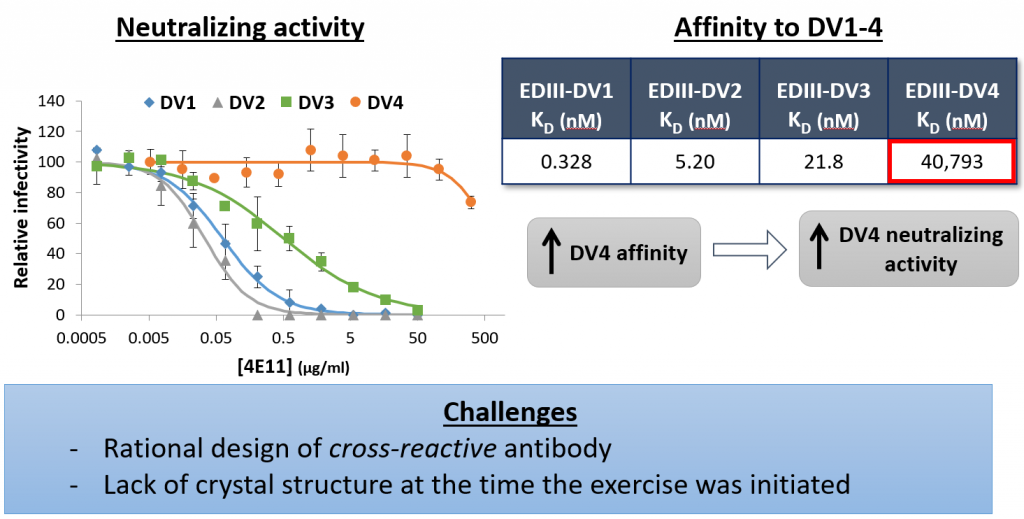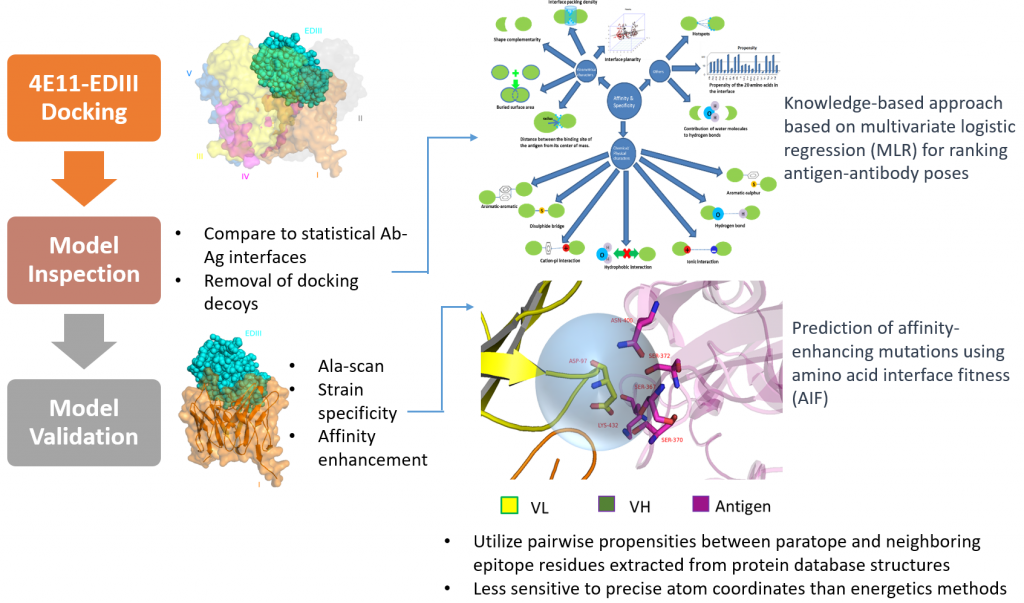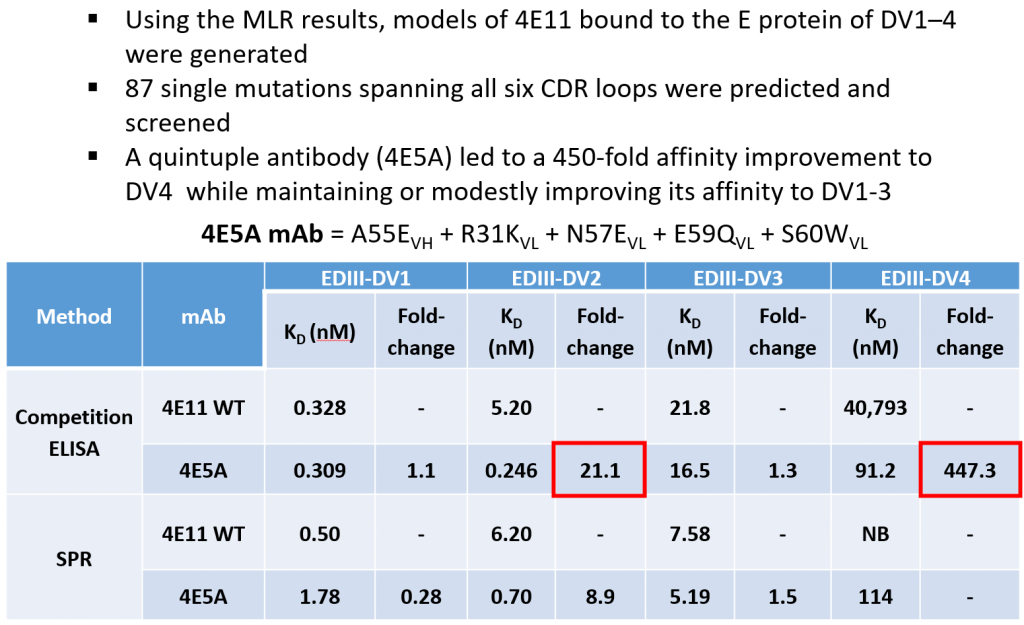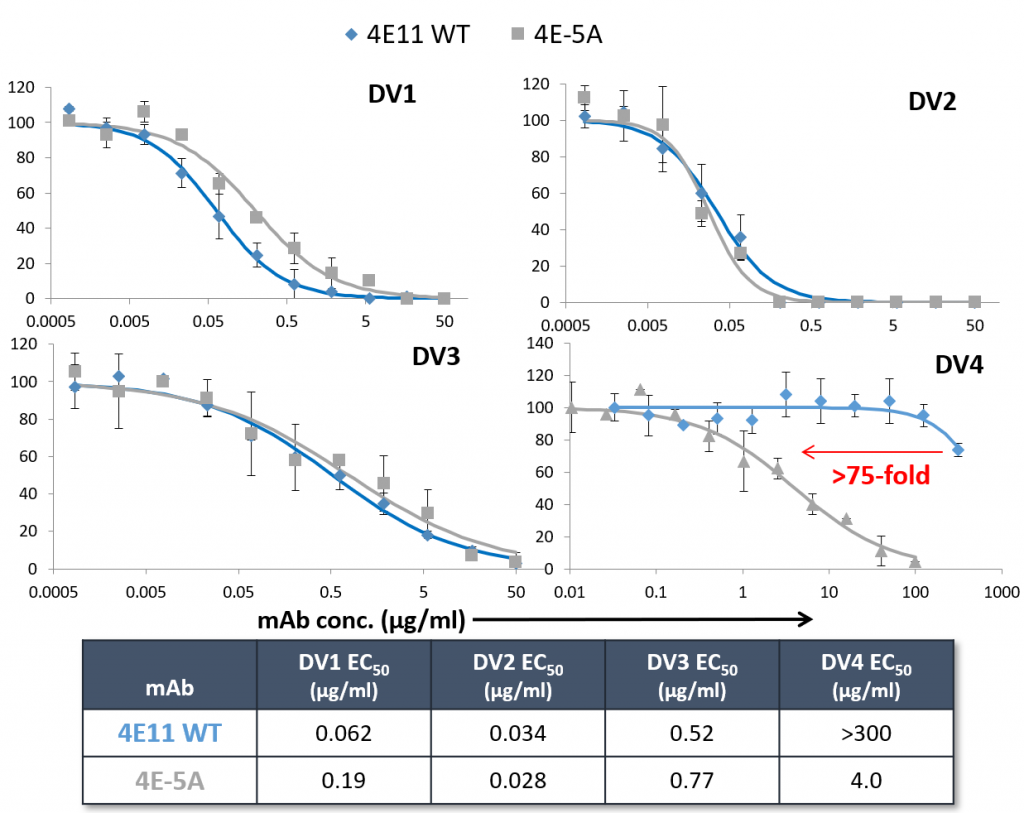Our foray into designing potent antibodies against flaviviruses began with a challenging antibody design problem of redesigning 4E11, a broad spectrum anti-Dengue Virus (DENV) antibody that neutralized dengue serotypes DENV-1, DENV-2 and DENV-3, to also neutralize DENV-4.
The challenge posed by this problem was two-fold: (1) the structure of 4E11 or its complex with the target epitope was not solved at that time and (2) the redesign effort required simultaneously solving for multiple epitope-paratope interactions to confer binding selectivity to DENV-4 while retaining its existing neutralization property to DENVs -1, -2 and -3

Several key metrics were developed to solve this problem by mining structural databases of antibody-antigen complexes. These metrics included amino acid interface fitness (AIF) that computed pairwise propensity of amino acids at antigen-antibody interfaces and a standardized epitope-paratope interface index (ZEPII) which computed a score for a given interface calculated based on AIF. The pose of the 4E11 antibody engaging with its target epitope surface was predicted accurately by employing a multivariate logic regression (MLR) method. The MLR was trained to discriminate native poses from decoys, which was otherwise challenging to predict correctly with standard scoring functions.

Using this predicted pose, mutations were engineered on 4E11 to enhance the binding affinity of the engineered antibody labelled as 4E5A by more than 450 fold compared to 4E11 while retaining 4E11’s affinity to DENV-1, -2 and -3 serotypes


